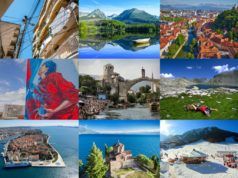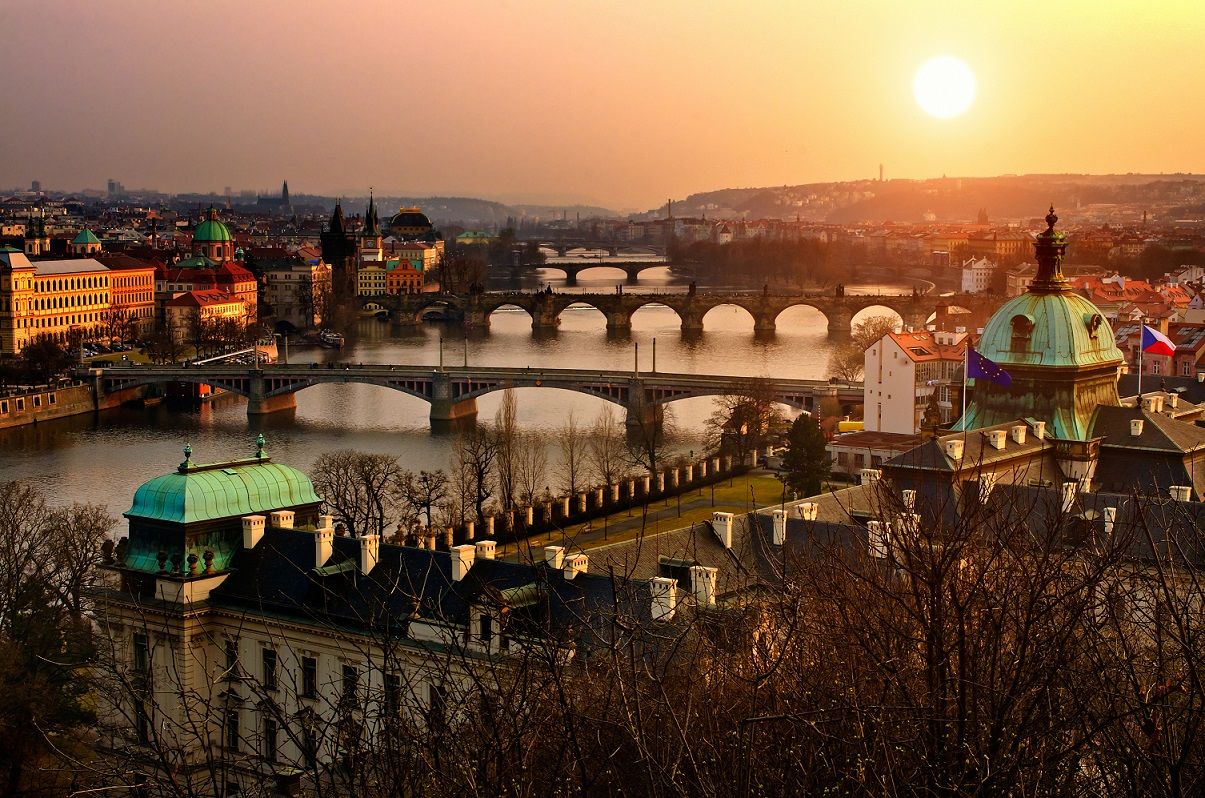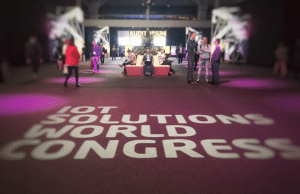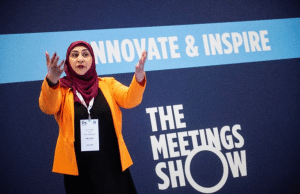BETWEN EAST AND WEST
[metaslider id=24470]
The fragile peace in Bosnia is occasionally interrupted by incidents that don’t undermine the feeling of security. The city is opening up to new capital and building sites are open all over the city despite the economic woes. The meetings industry is not yet among the key products of Sarajevo. For a serious breakthrough it should be dealt with in a planned and strategic manner. Sarajevo is a winner in hospitality,which contributes greatly to the positive personal experience of the participants. I often wonder if the four-year siege tore apart the spirit of tolerance that shaped the Bosnian culture for centuries beforehand and culminated in the Winter Olympics of 1984 under the world’s gaze. Sarajevo deserves a new “Olympic Games” and a number of new congress projects. The new spirit of the times is demonstrated by the Al Džezira Balkan TV station setting up headquarters in Sarajevo. According to the editors this is because of the special spirit of Sarajevo which enables regional coverage without nationalist tendencies.
[dropshadowbox align=”center” effect=”lifted-both” width=”900px” height=”” background_color=”#bed68b” border_width=”1″ border_color=”#dddddd” ]30th Anniversary of Winter Olympic Games in 2014 – Sarajevo will prepare numerous theatre plays, concerts, films, exhibitions and performances, and guest appearances of prominent international artists[/dropshadowbox]
To understand the spirit of Sarajevo you should first indulge in ‘A Reader in History’, the series of stories by Miljenko Jergović, which describes memories from the author’s childhood and also my childhood. For starters, what is the difference between the Fildžan used by Muslims and the cup Catholics use for coffee? Quite simply, it is the difference between the East and the West, which grows from nostalgic stories into a bitter reality and a bloody disintegration of the country and the city. I first visited Sarajevo as a teenager, during a school trip through Yugoslavia. We stayed at Ilidža, near the airport, in a city that many years later was to be divided. The city was at that time marked at every step by the most successful Olympic Games ever.
I couldn’t imagine back then the role this city would play in the history of the 20thcentury. The city touched me forever. Sarajevo, with its thousand year history, is based on tolerance between religious and national groups. Only a handful of cities in the world have a skyline of Muslim minarets, Catholic Church towers and Jewish synagogues. The war and siege of the tolerant city, which took place between 1992 and 1995, was to me a symbolic end of the bloody 20th century. Lasting 1335 days, the siege of the city was horrifying. Even more horrifying was the indifference of the international community, which let the civil strife in Bosnia ignite.
[dropshadowbox align=”center” effect=”lifted-both” width=”900px” height=”” background_color=”#bed68b” border_width=”1″ border_color=”#dddddd” ]100th Anniversary of the beginning of World War I – the year 2014 marks the 100th anniversary of the beginning of World War I, which was triggered by the assassination of the Austro-Hungarian heir to the throne in Sarajevo.[/dropshadowbox]
When I walk through Sarajevo today I can’t help but recall areas touched by war: Ferhadija, Dobrinja, Grbavica, Žuč, Butmir. You run into history at every step and it doesn’t release you after you return home. The contrast between renovated buildings and physical evidence of war is slowly disappearing, yet the wounds in people remain. The spirit of war is still tangible in the air.The Bosnia and Sarajevo from my youth are gone, but the romantic memories remain!
So what does all of this have to do with the meetings industry? I believe the meetings industry contributes immensely to tolerance, since it is based on communication and friendship. Sarajevo has a long history of tourism. At the end of the 19th Century it was among the most important tourist destinations of the Balkans. We can’t forget the Winter Olympic Games of 1984, which united the tourism and meetings industry of former Yugoslavia. To execute the games the strongest tourist agencies of that time came together. The games had a number of accompanying congress events and increased the number of tourists to Sarajevo. Vučko, the games’ mascot, and Jure Franko, Slovenian medal winner, still remain in our hearts.
Sixteen years after the end of the city siege, optimism in tourism is returning, the city being a destination for many tourists. The meetings industry is now officially on the agenda of politicians and strategists as a prospective area of development. The diversity of Sarajevo is extraordinary: the high mountains of Igman, Bjelašnica and Jahorina surrounding the city are great for winter sports and the rich cultural and historical heritage and diversity offer a number of new experiences, which are a good starting point for the development of the meetings industry. Access is currently the biggest obstacle for development. Bosnia is among the few countries without a motorway connection to other European motorway networks. Travelling from Ljubljana to Sarajevo by car is like going to the seaside in my childhood. The quality of local roads is broadly satisfactory. Air access is also improving. Right now 12 airlines connect Sarajevo to the world. Communal and social infrastructure is developed, somewhat outdated in some areas yet still functioning with relative ease. The city gives an impression of relative safety and tidiness. Public transportation is not so good, requiring substantial investment. The museum tramcars, however, are a part of the tourist folklore of the city.
[dropshadowbox align=”center” effect=”lifted-both” width=”900px” height=”” background_color=”#bed68b” border_width=”1″ border_color=”#dddddd” ]Peace event Sarajevo 2014 – international event that will bring together thousands of peace activists and youth from many countries around the world. Activities such as workshops, plenary sessions, conferences, round tables, as well as cultural and youth activities will be held in multiple locations in Sarajevo.[/dropshadowbox]
In 1992 most of the tourist infrastructure was damaged, among others the Bristol Hotel, which was fully renovated in April of this year. The hotel is managed by Shaza Hotels, a Dubai corporation. Within the hotel there is a small, multifunctional conference centre, which can seat up to 600 participants.
At the pinnacle of Sarajevo’s hotel offer, alongside the Hotel Bristol, is also Hotel Evropa, near Baščaršija, one with a long tradition. It was founded in 1882 and became the central congress hotel. With four congress halls it can seat up to 350 participants. At the outskirts of the city in the former Oslobođenje publishing house there is the five star Radon Plaza Hotel, with two smaller congress halls. In the direction of Ilidža, Hotel Hollywood is also suitable for hosting congresses. The Holiday Inn, the first hotel of this chain in the former Yugoslavia, is mostly famous from the war and Olympic era. Congress capacities are in need of total renovation and, despite the developed plans, nothing has happened yet.
Congress halls are also available at Skenderija exhibition centre. In the future Sarajevo will realise a number of new investments and renovations. Among the first will be the construction of Hotel Kempinski within the SCC – Sarajevo City Centre shopping centre. The hotel is set to open its doors at the end of 2012.
[dropshadowbox align=”center” effect=”lifted-both” width=”900px” height=”” background_color=”#bed68b” border_width=”1″ border_color=”#dddddd” ]20th Sarajevo Film Festival – this year the Sarajevo Film Festival, the most successful Sarajevo brand, an international cinematic art event that brought the city world fame and recognition, celebrates its 20th birthday. The First Sarajevo Film Festival was held in 1995 and was visited by 3,500 people, while today the number of visitors runs to 100,000[/dropshadowbox]
Nowadays most congress halls are multifunctional and are often used for banquets and receptions, a typical use when serious congress business is quiet. As a consequence, the equipment and congress logistics are adapted. The biggest issue for Sarajevo is that it currently doesn’t have a convention bureau to bring together, organise and professionalize the congress offer. International meeting planners therefore don’t have a neutral and honest partner at the destination. Sarajevo also doesn’t have a serious convention centre, the slack taken up by the exhibition capacities at Skenderija.
The agencies are also lagging behind. We are missing true PCO and DMC agencies that are fully specialised for the meetings industry. Most agencies deal with other tourist activities as well, therefore the city has no defined incentive programmes, despite ideal conditions.
The better part of the offer is still the social life, which lost some of its ease with the war but the “kafana” spirit is still high. The legendary Baščaršija market, with its unsurpassable ćevapi at Hodžič, Željo or Petica and numerous other cafes for every taste. Cultural and historic heritage offers a number of special event venues, some still not being used to their true potential. Among them are the Zemaljski muzej and a number of Olympic venues from 1984.
[dropshadowbox align=”center” effect=”lifted-both” width=”900px” height=”” background_color=”#bed68b” border_width=”1″ border_color=”#dddddd” ]National and University Library of Bosnia and Herzegovina – the building will be brought back to function in 2014. The building, now a national monument, will be used for a variety of events. Its space will also be used for various protocol events for all levels of government, concerts and exhibitions.[/dropshadowbox]
The fragile peace in Bosnia is occasionally interrupted by incidents that don’t undermine the feeling of security. The city is opening up to new capital and building sites are open all over the city despite the economic woes. The meetings industry is not yet among the key products of Sarajevo. For a serious breakthrough it should be dealt with in a planned and strategic manner. Sarajevo is a winner in hospitality,which contributes greatly to the positive personal experience of the participants. I often wonder if the four-year siege tore apart the spirit of tolerance that shaped the Bosnian culture for centuries beforehand and culminated in the Winter Olympics of 1984 under the world’s gaze. Sarajevo deserves a new “Olympic Games” and a number of new congress projects. For starters, Sarajevo will be the European Cultural Capital in 2014. The new spirit of the times is demonstrated by the Al Džezira Balkan TV station setting up headquarters in Sarajevo. According to the editors this is because of the special spirit of Sarajevo which enables regional coverage without nationalist tendencies.
The Bosnia and Sarajevo from my youth are gone, but the romantic memories remain!
Destination grade: 3,31– RECOMMENDABLE MEETINGS DESTINATION
Individual grades:
5 excellent meetings destination
4 quality meetings destination
3 recommendable meetings destination
2 average meetings destination
1 so-so
Individual grades:
A. Natural and cultural factors: 4,39
Sarajevo is known for its incredible countryside spiced with historical, social and cultural attractiveness. Due to the recent history Sarajevo is one of the more exciting cities in the region. The negative aspect is the attitude towards the environment and the general state of the environment and architecture, a consequence of the war in the nineties. In Sarajevo, geography intertwines with chemistry.
B. General and transport infrastructure: 3,46
The general infrastructure and traffic infrastructure of Sarajevo is average, with huge investments needed in some areas to help Sarajevo catch up with developed congress destinations. This is especially the case with road and air access and public transportation.
C. Tourist infrastructure: 3,35
The tourism infrastructure of Sarajevo is gradually picking up and rejuvenating, however everything is happening independently and without a clear and coherent strategy. The biggest attribute of their current offer are that numerous cafes, restaurants, čevabdžinice and bars Sarajevo is famous for. Tourist development is slowly followed by the tourist “superstructure”, such as information centres and support services.
D. Meetings infrastructure: 3,05
The weakest part of the offer is the congress infrastructure – first and foremost the lack of a convention bureau rounding up the offer and the fact that Sarajevo lacks a mid-sized convention centre. Other congress infrastructure is at best average.
E. Subjective grade: 4,02
The biggest asset of Sarajevo is the hospitality of the locals and a good balance between price and quality. In the area of political stability, safety and competitiveness, Sarajevo is an average destination. To be on the way towards becoming a developed congress destination, the attitude towards the meetings industry will have to change.
[metaslider id=24919]
Comparisons with the region
The brand ‘Sarajevo’ is one of the strongest trademarks in the region. It gets its character from the dramatic juncture between East and West. In the meetings industry the brand and destination are completely unexploited despite their immense potential. With proper positioning and investments in the meetings industry Sarajevo can quickly catch up with other destinations in the region. A special asset for the development of the meetings industry is the attitude of the people of Sarajevo, who are known for their humour, tolerance and understanding.
[metaslider id=24933]
Cool meetings
Sarajevo burek (only with meat), Bosnian pies and ćevapčići at Baščaršija rule! The Bosnian black coffee goes great with baklava, urmašice, tulumba and ratlukom. We grew up with Sarajevan music: Bijelo Dugme, Crvena Jabuka, Plavi orkestar as well as Kemal Monteno, Zdravko Čolić, Dino Merlin and sevdah. Even the culinary offer and multi-ethnic – cultural and national – Olympic spirit are a part of the congress Sarajevo from our past.
Issue: KONGRES MEETOLOGUE 2013
Pdf: KONGRES-MAGAZINE-meetologue-2013













